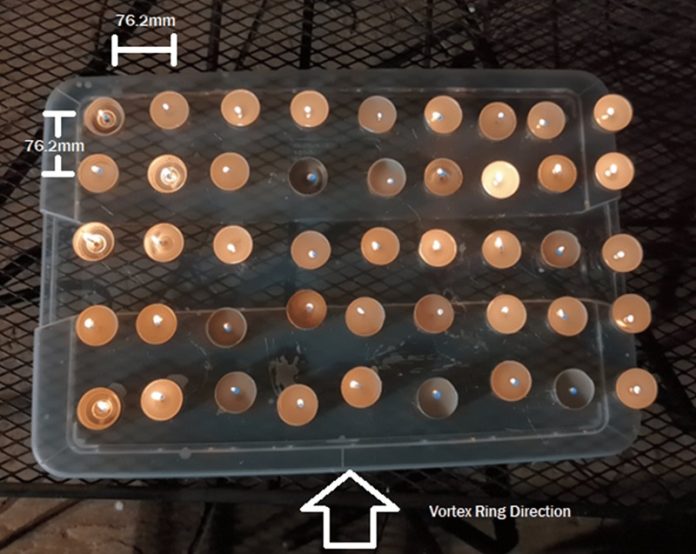
Firefighters may soon have a powerful new tool to fight fires more safely and efficiently.
Researchers at The Ohio State University have developed a portable fire suppression device that uses electrically assisted wind to extinguish flames.
Unlike traditional firefighting methods that rely on water or chemical foams, this new device doesn’t require large amounts of water and avoids the use of toxic chemicals.
Instead, it releases conductive aerosols—tiny particles that respond to electricity.
These aerosols are carried by vortex rings—donut-shaped bursts of air—that move rapidly and create turbulence.
As the rings travel, they turn oxygen into ozone, disrupting the fire’s combustion process and putting it out quickly.
The device looks like a small bucket attached to an arm brace. Firefighters aim it at the flames, and the bucket releases bursts of air filled with conductive aerosols. These bursts are delivered in an electric arc, helping to control and extinguish the fire efficiently.
This innovative idea was developed to improve fire management techniques, according to Qudsia Tahmina, co-author of the study and an associate professor of electrical and computer engineering. The team tested seven different aerosol mixtures, ultimately choosing a coarse copper solution as the most effective material for creating the vortex rings.
Researchers built and tested two types of launchers:
- A compressed air launcher with a conical-shaped opening.
- An elastic diaphragm launcher with a square-edged opening.
Both designs worked well up to 2 meters (6.5 feet) away, but the compressed air launcher was the most effective.
Lead researcher John LaRocco was impressed by the results. “Using electricity and vortex ring technology, we found a more efficient way to solve an environmental problem that will improve lives,” he said.
One of the biggest advantages of this device is that it allows firefighters to put out flames from a safer distance, reducing the risk of injury.
Since vortex rings can carry chemicals over long distances, firefighters wouldn’t need to get dangerously close to fires.
The researchers also believe this device could be improved with smart sensors and image analysis, making it more precise in detecting different types of fires.
Beyond firefighting, this technology could have future applications in aerospace and industrial safety. For example, it could be used to protect military vehicles or even spacecraft from fires.
“There are many ways our device could make a difference,” said John Simonis, a co-author and engineering student.
The study was published in the journal Technologies in 2024.
Source: The Ohio State University.



